
| Home | Bottom |
| SPACE | TRANSPORT : | Spacecraft Tech : | HTOL TSTO |
In this approach,an aeroplane (the first stage) hauls the small second stage to a height from where it effectively 'launches' itself. The first stage is referred to as the booster or carrier while the second stage is called the orbiter. This idea has been around for quite some time and is in fact pretty popular with aerospace engineers.
The good part about this system is that it does not require any outlandish technology to work.This has been tested in the 1960s in the form of the sub-orbital X-15.Even today it is the only reusable spaceplane.These concepts are feasible and safe. Space payload launches also have been done. For example, Orbital Sciences Corp's Pegasus launches satellites into LEO and can also carry a warhead to destroy enemy satellites(!). The X-43 Hyper-X vehicle will also be launched from it.

One disadvantage of some concepts is their over-reliance on their booster stages. Some like Bristol Spaceplanes' Spacecab and Spacebus concepts require atleast a boost to Mach 3 to 6 at atleast 30 km altitude. This is possible but most probably a specially designed and manufactured booster will be required, along with the space plane itself -which will require loads of money (unless they can influence the designs of the upcoming civil SSTs to suit their needs.)
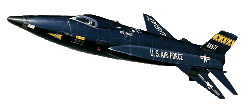
The Concorde manages Mach 2 at 18 km .Even the second generation civilian SSTs to be developed by the EU and the US will be designed to fly only a little faster than Mach 2,say Mach 2.2 or perhaps Mach 2.7. Their emphasis will be to carry more people to longer distances at the least possible ticket price(a max of 15-20% higher than for sub-sonic aeroplanes). Most probably only the third generation of SSTs(which are not due for some time) will be able to perform at this level. And by the time the Third Generation of SSTs do come ,current technology of that time should allow us to make HTOL-SSTO. So it should be much better to rely on conventional sub-sonic aeroplanes like the three X-Prize contestants hope to. However these cannot reach orbit.
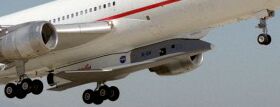
While most first stage carrier aircraft are only concepts, some possible candidates are already flying and infact have been designed for this role in mind. These include Tu-225, Tu-160, M-55, Boeing 747, B-52 and Proteus. The spacecraft may be carried under the wings, on the back or on the belly of the plane itself.
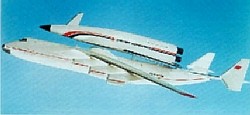
The Antonov An-225 Mriya is the world's largest military transport aircraft. It was specifically designed to carry the soviet space shuttle, Buran on it's back but can also transport equipment and supplies. Its Russian means "dream" and its NATO codename is Cossack.
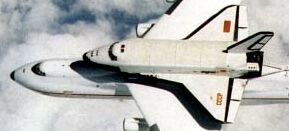
This brute can lift enormous loads and is huge in size. It has a twin tail arrangement which is ideally suited for air launch of a craft from its back. Hence it was zeroed onto by the interim HOTOL team as their choice(the HOTOL or Horizontal Takeoff single-stage-to-orbit Reusable Launcher was a RLV project by BAe and ESA) and was also considred by Pan Aero(a xprize participant) for one of their earlier concepts. Unfortunately, both of them could not materialize.
Another large airplane is the Boeing 747. It is one of the few airplanes whose name can be recalled by who are not even remotely interested in them. It is unlikely that it can be used for a role required for HTOL2STO launches to space. The 747 has a tail so it can't carry the spacecraft on its back(it may crash with the tail at launch), neither is designed to carry loads under its wings.
Kelly Space and Technology hopes to solve this problem by towing the orbiter behind the 747. Gliders or sailplanes are often launched by this method, though a tow launch of such a large vehicle has never been tried.
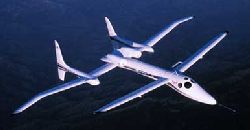
Proteus is a multi-mission aircraft designed by Burt Rutan's Scaled Composites, which is involved with many cutting edge aerospace projects.
The vehicle is intended to carry out diverse roles from telecommunications to imaging to atmospheric research, as well as a reusable first stage for space launches. In its space launch configuration Proteus is designed to either carry an expendable second stage for satellite launches, or a three man space tourism vehicle. In this latter configuration Proteus is a contender for the X-Prize.
Powered by twin Williams FJ44-2E turbofans, Proteus is intended to carry payloads in the region of 2000 pounds, to an altitude of 60,000 feet. The first test flight of the Proteus prototype flew on 26th July 1998.

Of all possible aeroplanes, the B-52 Starofortress is the most experienced in such a configuration. It has launched many experimental craft from beneath its wings, including the X-1 to the X-15, and recently the X-38 and the X-43 in the future. Being a warplane, it has been designed to carry large loads in pylons.
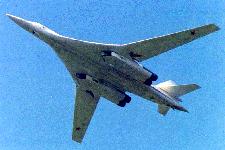
The Tupolev Tu-160 "Blackjack" is a supersonic strategic bomber. It is similar to USAF's B1-B in configuration but it 30% larger and faster. It is pretty new, with the first flight taking place in 1981. As the most powerful combat aircraft of the Russian Air Force, the Tu-160 flies at 2,000 km/hr and can exceed it with a lighter load. It can climb 60-70 meters per second and reach heights of up 15,000 meters.
Yakovlev HAAL : Initially conceived in 1994 as Burlak (barge-hauler) and now called High Altitude Aerial Launch (HAAL), this concept is possible with today’s technology. The system would consist of a two stage expendable rocket launched from the Tu-160 at an altitude of 45,000 ft and Mach 1.7. The 70,000 lb launch vehicle is based on a Russian ICBM and is fueled with non-cryogenic propellants (N2O4/UDMH) and is carried under the Tu-160. Payload is 2,500 lbs to a 100 nm orbit. Launch price is estimated at $5 million and development cost is estimated at $100 million. Getting the necessary permission to use the big Tupolev bombers - the most advanced bombers the Russians have ever built – required that the US and the Ukraine agree to lift certain conditions of the Strategic Arms Limitation Treaty. The aircraft were modified so that they cannot again be used for weapons delivery.
The Blackjack is probably the only supersonic aeroplane that has the above capability.
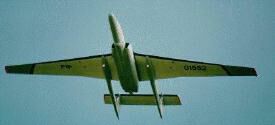
The M-55 or M-17RM "Mystic" aircraft has been selected by Xprize contestant Cosmopolis XXI as the first stage booster of their space capsule. It was intoduced in 1988 as a reconnaissance aeroplane. It has a ceiling of 20 KM and can carry a payload of 1500 Kg.
Also See :
| Spacecraft Tech | : | HTOL SSTO |
| Spacecraft Tech | : | Hypersonic Flight |
| X-Prize | : | Eclipse Astroliner |
| X-Prize | : | Proteus |
| X-Prize | : | Cosmopolis XXI |
| Aircraft | : | HyperSoar |

Mail ST at [email protected] . Your suggestions are welcome.
| [ Home ] | [ Aircraft ] | [ Explore Space ] | [ Space Stations] | [ Spacecraft Tech ] | [ Spacecraft ] | [ X-Prize ] |